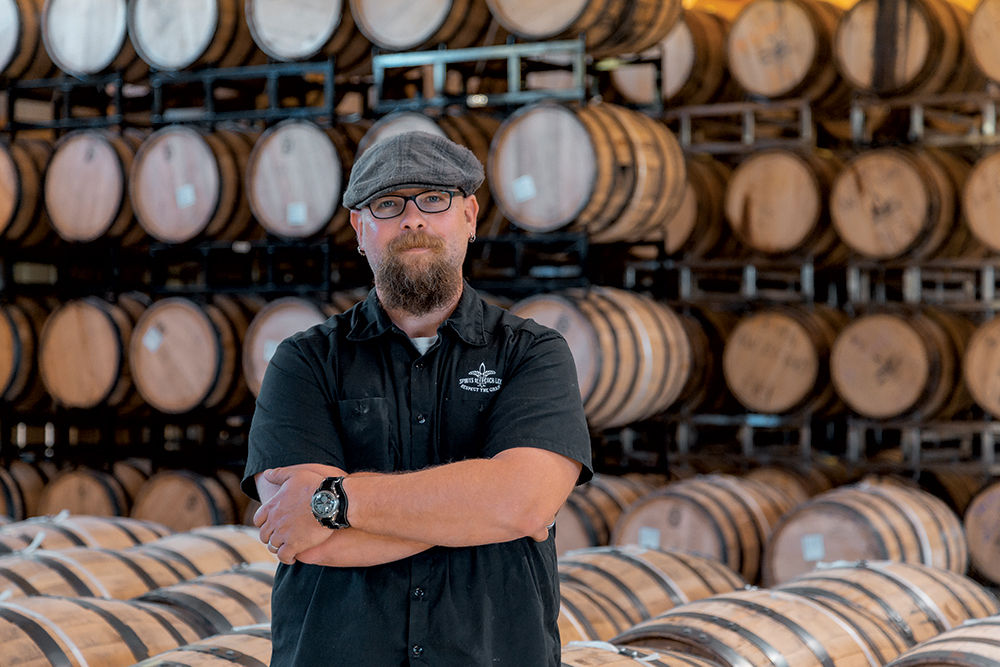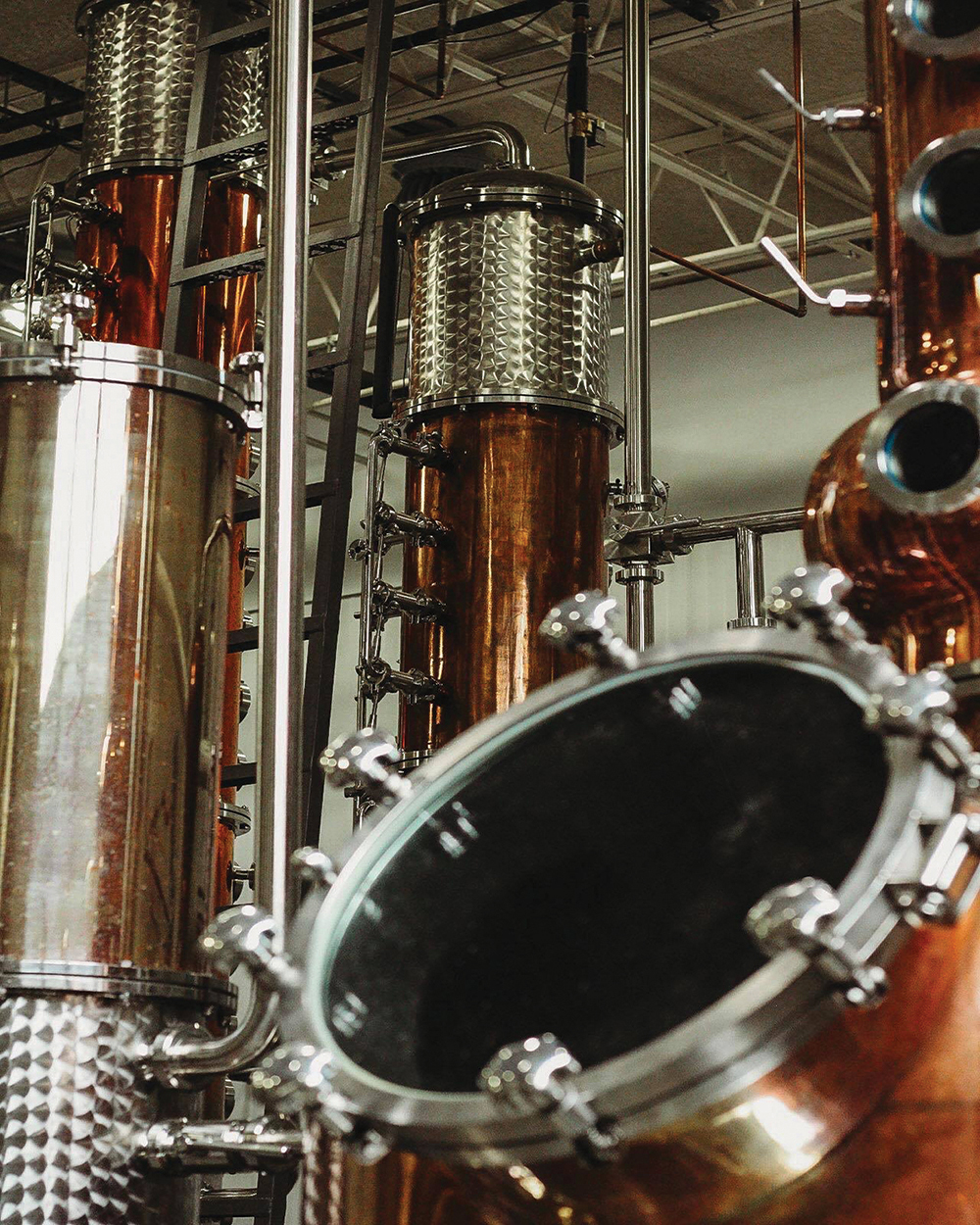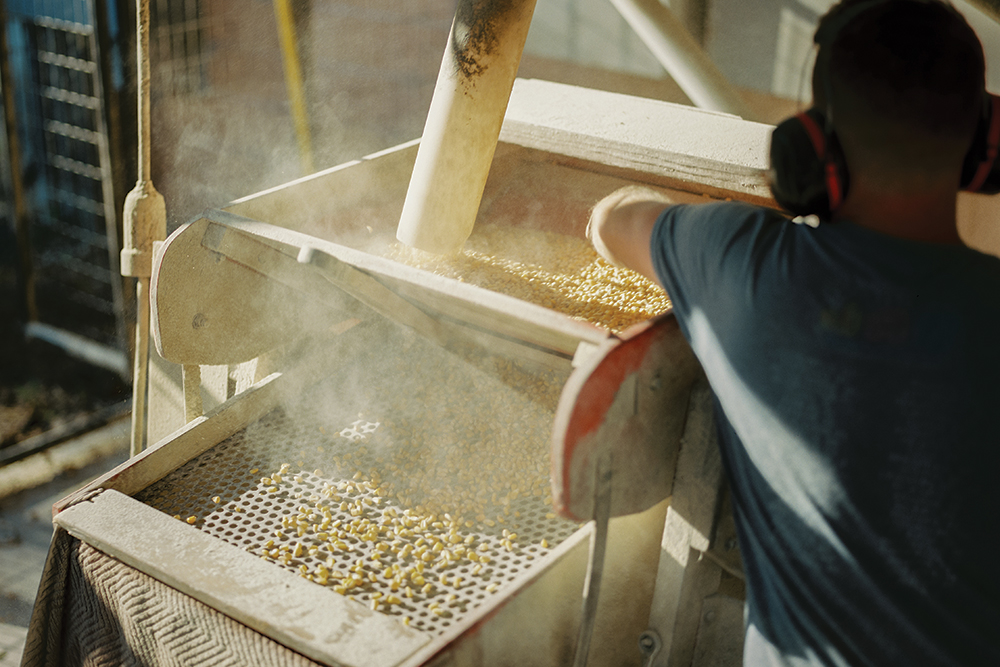Young Spirits: Spirits of French Lick
A spirit of experimentation runs through everything made at this Indiana distillery.
Article by Steve Coomes
Alan Bishop’s résumé as a working distiller could fit on a cocktail napkin with just two bullet points: past assistant distiller at Copper & Kings American Brandy Company in Louisville, Kentucky, and current head distiller at Spirits of French Lick in West Baden, Indiana.
But if you were to catalogue his actual distilling experience, you’d need several notebooks and a handful of pens. There are many stories to tell, a raft of research to recall, and myriad experiments to regale and regret. Bishop’s interest in spirits stretches back to his teens, when his father, Dale Bishop, was a home distiller.
“I grew up around it and was tangentially interested in it at 15,” Alan Bishop said. “When I was about 24, I got heavily involved in it. When I was 30, I went professional.”
Bishop immersed himself in the study of global spirits history with a keen bias toward Indiana’s whiskey-and-brandy heritage. This Hoosier boy unabashedly loves his home state’s hooch.
“When you live just across the river from Kentucky, it’s easy for people to overlook Indiana’s spirits heritage,” he said. “There were a lot of spirits made here. I love learning about them.”
But even though he was a spirits wonk, Bishop wasn’t exactly champing at the bit to become a professional distiller. It took some encouragement from then-winemaker Lisa Roper Wicker and her client, Steve Beam, cofounder and distiller at Limestone Branch Distillers.
“You know when you meet people and they get you and you get them, even when you don’t do the same things?” Roper Wicker said. “I knew he got it. He understood grain and distilling and how it all worked. It wasn’t hard to tell he was very smart.”
When a position opened at Limestone, Beam tried to hire Bishop, but the four-hour round-trip commute was a deal breaker. Soon enough, Roper Wicker told Bishop that Copper & Kings, a new brandy distillery in Louisville, needed help. He applied and got the job of assistant distiller. About two years later, Roper Wicker—who is now president and head distiller at Widow Jane Distillery in Brooklyn, New York—referred him to a second opportunity, this time at Spirits of French Lick. Bishop was hired immediately.
“We say we definitely lucked out with Alan,” said Lauralein Doty, one of four family co-owners of both the distillery and French Lick Winery. “It’s incredible to watch him work and hear how much he knows about the history and technical side of distilling.”

Small Footprint, Rapid Growth
Though French Lick is in the distillery’s name, it’s located a quarter-mile away in West Baden. French Lick and West Baden are historic resort towns that once drew the wealthy elite from around the world to unwind, dine, gamble, golf, and ride horseback on the grounds of grand resorts located in each. Those properties—French Lick Springs Resort and West Baden Springs—fell into disrepair during the 20th Century, but each was meticulously restored in the early 2000s. No visit to the area is complete without seeing each, and Spirits of French Lick distillery is within walking distance of both.
Bishop was given good equipment that produces a great variety of spirits. (Most of that in 2020 was whiskey, which accounts for about 625 barrels annually.) The rambling still set includes a 1,200-gallon stripping still; a 359-gallon copper pot still with an offset eight-plate whiskey column and an offset 12-plate vodka column; and a 650-gallon copper pot still topped with a four-plate column.

From Those Stills Come…
Bourbon: Lee W. Sinclair Bottled-In-Bond and Lee Sinclair
Four Grain; Mattie Gladden Bottled-In-Bond; and The Wheater
Rye: Solomon Scott
Gin: Old Tom and Barrel-Aged Old Tom
Absinthe: Le Bleu (120 proof) and Fascination Street (106 proof)
Eau de vie: SonRoho and Blackberry
Brandy: Old Clifty Hoosier Apple Brandy
Rum: Stamper’s Creek
Aquavit: Aquavit
That volume and variety have helped the distillery stretch distribution to five states. Doty believes it can eventually widen to 10, while Bishop said 15 to 20 states are possible if a second production shift is added and capacity increased. And what does Bishop think of managing all this variety?
“It’s a pain in the ass, but I guess it’s kind of my fault,” he said, laughing. “There’s always going to be a spirit of experimentation, so not all that we’ve done will continue to be produced. And we love playing with different yeast varieties.”
That includes capturing and propagating a “house yeast” from the distillery’s own atmosphere, as well as using yeast strains captured at long-abandoned Indiana distilleries. Bishop enjoys adding a variety of yeasts in staggered phases of fermentation to create complex flavors.
“We cook 600 gallons [of mash], pump that into a fermenter, and add the house yeast to develop esters and pull out grain flavors for 24 hours,” he said. “Then, we do the second cook and add in brandy yeast, which outcompetes and kills everything else and makes nutty esters we’re after.”
His love of grain is evident in most of Spirits of French Lick’s spirits. Caraway is sharply defined in the Aquavit (imagine a sipping gin that leads with rye and finishes with coriander), while oats and wheat round out the mouthfeel in the Lee W. Sinclair bourbon. You like rye? You’ll definitely appreciate the rye-forward Mattie Gladden bourbon.
To heighten their grain notes, all of the distillery’s grain whiskeys are made in the 650-gallon copper pot still. Bishop’s fascination with flavors of the past leads him to recreate whiskeys made long ago by American farm distillers.
“I’m not doing anything new. I’m just doing what they did before industrialization and Prohibition. It’s been so long since those whiskeys were made, we’ve just forgotten about how they did it,” he said.
“If you think about just bourbon, based on what we taste today, we know only a couple of colors in the spectrum. We don’t know all the colors that were there years ago. Discovering that is fun stuff for me.”






